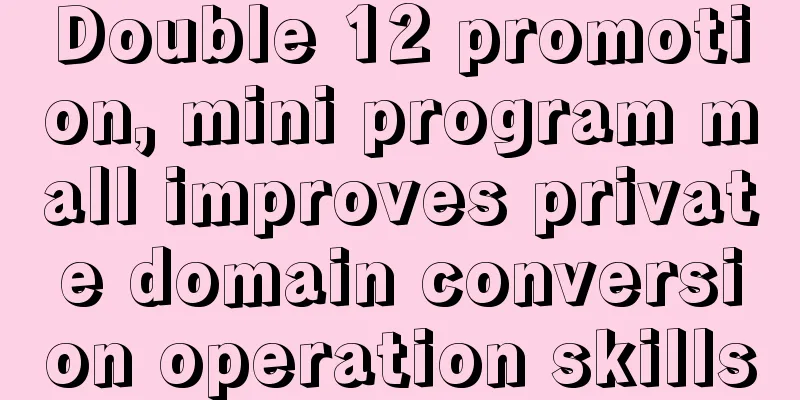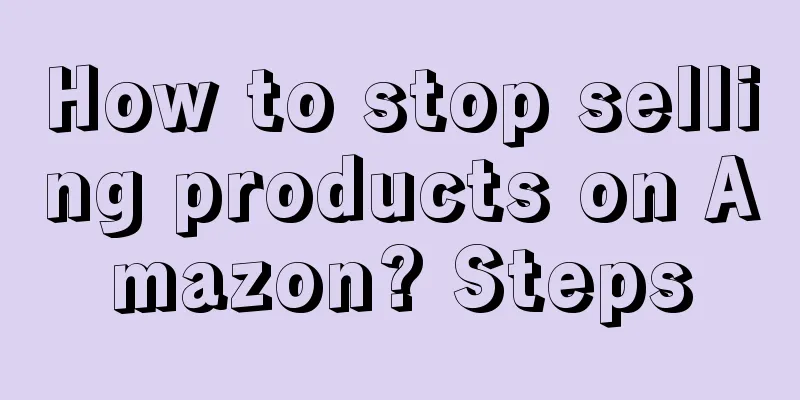4 product selection methods, tell you how to choose good products!

From the perspective of managing a project, product selection accounts for 20% of the importance in determining how to carry out the project, while your execution accounts for 80%. However, from the perspective of the 80/20 rule, product selection accounts for 80% of the importance in determining whether the project is successful, while your execution accounts for only 20%. So there is a saying that goes like this: Life is always faced with constant choices, choices are greater than efforts, and the direction is wrong, all efforts will be in vain! Because determining the field and choosing the product are the directions you choose. If you choose the wrong direction, no matter how hard you work, all you will gain in the end are a few wrinkles on your brow. What I’m going to give you today is an implementation plan for product selection. No matter how much or how little you earn, no matter how big or small your business is, it can at least help you find the right direction and make your efforts worthwhile. 1. Interest extension methodNo matter what project you do or what product you choose, if you are not interested, even if it is a very profitable product, you will soon not want to do it, even if it can make money. Don’t say it’s impossible, Teacher Fox has experienced it himself. Around 2013, I was working on a sports product for about a year, and overall it was pretty good, with a net profit of about 20%, so I was able to make some money. But later on, the more I worked, the less I wanted to do it. There was even a voice deep in my heart that hoped there would be no orders today, and no customer inquiries today. What a horrible thought this is! Maybe it’s because I haven’t liked sports since I was a child, so I’m not interested in sports-related products. I’ve been working on these products for nearly a year every day. Although it’s relatively easy and I can make money, I feel a little overwhelmed deep down. In the end, it might be the effect of the "law of attraction". The number of orders really decreased slowly. At that time, I sold the project idea and transferred it to another friend. The tea products I selected later, although I worked until 1 or 2 in the morning every day, I didn’t feel very tired, because I drink tea every day and I like tea. I don’t know how many people have had the same experience as me, or if I am just being extreme; Anyway, if you are not interested in products or fields, at least you will be very tired when working on them. 1. Find your interests firstThis is what I talked about in the first lesson of "Product Selection from 0 to 1". You can see how much I value it! Because I find that many people don’t know how to discover their own interests and strengths. This only shows that you don’t know yourself well enough. At this time, you need to calm down and reflect on yourself. For example, what kind of things do you do to easily enter the flow state, do you not feel tired when doing things, or what kind of habits do you have in your life... These may all be entry points for selecting products of your interest. I won't go into detail here, because I may make a video on hobby monetization in the future. I've been doing this in recent years and have gained a lot of experience. I've accumulated some experience on how to find super-high-priced hobby products, how to monetize them, etc. But I've found that there don't seem to be many articles on this topic that are explained in detail on the Internet. The specific time is to be determined. Now, let's assume that your interest is drinking tea. 2. Segmentation extensionSegmentation means breaking down categories, but the prerequisite is that you must be familiar with the category. For example, if you like to drink tea, this is just a big category. You need to break it down into what types of tea are there? If you have no inspiration, you can look at Taobao categories: Here you can see that Taobao divides the "tea" related categories into: tea, beverages... Open the channel link, and you can split it into many subcategories. Teacher Fox is just giving an example and will not go into details. You just need to understand it! Then, what should you do if you feel that tea making is messy, poorly done, and you don’t have the confidence to do it? You can also expand peripheral products, such as tea sets and tea tables for drinking tea... Check out the Taobao categories and you’ll find something like this: At this time, your category continues to expand... To break it down further, for example, I found that another demand that extends beyond tea sets is a "portable tea brewing set", which is a tea drinking set for travelers and campers. For tea lovers, if you don’t make tea when you sit down, your hands will itch, just like the first thing I do when I get up every day is not to eat breakfast, but to make tea first… So this is a product targeting a small group of people. If you can get the supply through channels yourself, then you can do it. Of course, it’s impossible to sell it for just a few dozen dollars and compete with others, right? So, regarding product pricing, you can refer to my article "Product Pricing Strategy: Crowd Pricing" Regarding how to sell at a higher price, you can refer to my article "Targeting niche areas and finding products with super high average order value!" 3. OthersTo find the corresponding category, you need to analyze the competition and verify the market demand. As for market demand, the Taobao sales volume has basically told you that, but we just need to filter and classify these customers. You just need to think about how to package the value well so that one order can be equivalent to 10-20 orders from others! Regarding competition, you can avoid most of the competition by slicing the population and only serving a small part of them. As for the selling method, it must go beyond the Taobao system. These are not the focus of this article. I will talk about them in detail later: how to differentiate, how to analyze competitors, how to avoid competition, how to distribute sales channels... In short, this is the interest extension method of finding products. Although it is not explained in detail, the space is limited, and I hope you can draw inferences from it. 2. Logical Product Selection MethodLogical product selection can be divided into four ways: 1. From effect to causeAs the name suggests, finding the cause of the problem from the result and then giving the corresponding solution is referred to as the "law of cause and effect". For example: The customer has oily face, this is a result. There are several reasons for this: 1) Staying up late for a long time and high mental stress lead to endocrine disorders; At this time, you can provide a "calming" solution. For example: aromatherapy essential oils relieve stress, help sleep, or launch meditation courses... 2) Lack of vitamins leads to imbalance of skin metabolism; In this case, you can launch a diet therapy course, or directly launch diet therapy materials to help customers adjust their nutrition and achieve balanced nutrition... 3) Living environment, oil smoke, and dust can cause pores to become clogged; You can offer facial care regimens, including skin care products… This is the thinking process of deducing the cause from the result of "oily vaginal discharge" and then to the solution. Each problem or result will correspond to many causes, and each cause may also have many solutions, and you need to use them flexibly. 2. From the part to the wholeExtend from partial customer needs to overall needs. For example, to drink tea, you need tea leaves, tea sets, and a tea table. This is a comprehensive solution. This type of solution is needed for newly renovated homes, new offices, and new companies. For example, if you create a new brand, you need to find someone to design the logo, packaging, main color, brand style, brand story... You can find a designer to do each step, but the final styles will not match. If you directly find a capable design company to do it and provide a complete solution based on your needs, the presentation effect will be completely different. To sum up, it is to find a customer's demand point and extend it into a surface. It can also be used in reverse, "from the whole to the part", find a demand, split it into many different sub-demands, only focus on one sub-field, and only solve one type of problem. 3. From properties to usesI originally found this inspiration in traditional Chinese medicine. Traditional Chinese medicine needs to distinguish the characteristics and functions of the medicinal materials based on "properties and uses". At that time, I had a flash of inspiration that this can also be used in product selection! When we choose products, our thinking is different from that of medicinal materials. The products cover so many industries and categories, so we need to use them flexibly. For example: There are many solutions to the need to "remove smoke odor". Product properties can be roughly divided into: perfume, ointment, aromatherapy, spray... From the perspective of use, it can be divided into: offices, public places, barbecue restaurants, restaurants, toilets... For example, if you use it in a restaurant, you can't spray it everywhere, it's not realistic, you can put ointment or aromatherapy; You can also make the ointment into a shape similar to a "lucky cat", which means that you spread the "(food) fragrance" and "suck back" the guests' money (smell of cigarettes). This is a kind of conceptual packaging. You tell the story to your bosses, don’t they like it? Such a product would be at least several times more expensive than an ordinary "balm holder", right? Different products have different ways of playing, such as: The same stone, but I chose the mineral with the property of "diamond"; Then give it the meaning of "loyal love"; Tell men: Give diamonds to girls to express love, that's what it's for! In addition to the examples above, you can break down your existing products into “properties and uses.” Tips: In addition to using the "logical product selection method" to select products, you can also use this method to find the differentiation of your products and make micro-innovations. For example, sometimes, if you change the shape and material of the same product, it will be completely different from your competitors. This is just a small tip. If you are intelligent enough, you should know what Teacher Fox means and be able to implement it immediately! 3. Cognitive Product SelectionFrom a macro perspective, cognition is the process and result of our brain's processing of various information from the objective world. But since we are just selecting products, there is no need to make it so complicated. You can simply understand that cognition means: having enough experience in your product and industry, and having enough experiences, even experiences of failure. As I said, you can only make money within the scope of your cognition. The core of this sentence is to tell you to look for customers and competitors whose cognition is lower than yours! For example, when your competitors are selling purple clay teapots for dozens of yuan each, and you have sufficient knowledge about the purple clay teapot industry, you can choose to only serve those "high-demand, high-cognition" customers. They are interested in:
In short, the more you know about an industry and products, the easier it will be for you to crush most of your customers and competitors. 4. Capital Selection MethodProjects that are favored by capital will definitely have unique products, and these characteristics are very worthy of reference for us small and medium-sized entrepreneurs. You can open the IT Orange Project Investment Map (URL omitted): For example, under the category of culture and entertainment - the second dimension: When I opened it, I saw the following picture: It makes me think, where should I put all these 2D figures I bought? Is it going to be left on the table gathering dust? Doesn’t this require buying a cabinet to display it? Otherwise, how can I show my friends how professional I am? So I went to Taobao to search, and the products are as follows: And don't accuse me of corrupting you - you can go to 1688 and search to see how much such a product costs. Anyway, that’s the idea! summaryThe four methods mentioned in this article have a lot of room for extension. You need to internalize them and apply them to other situations. If you don’t understand, you can save them and read them several times. The product selection ideas mentioned in the article are a condensed version of my summary over the years. Due to space limitations, there are still many things that cannot be explained in detail, and I will share them in multiple articles in the future. |
>>: Differentiate online content forms and choose appropriate growth methods
Recommend
What should I do if an Amazon email times out? What should I do if I receive a warning email?
Sellers who open stores on Amazon communicate with...
How can a novice do cross-border e-commerce without a source of goods? What are the tips?
As an emerging business model, cross-border e-comm...
How much is the VAT fee for the European site? What is the VAT fee for Amazon's European site?
Now, when doing cross-border e-commerce in Europe,...
What is the Amazon warehouse entry deadline? How can I find out?
2022 is already halfway through, and the horn of h...
How to cancel a paid order on eBay? How to choose products?
eBay is quite popular now, so some merchants will ...
Three ways to eat "Fang Hua" - different brands' entry strategies
The work "Fanghua" is like a colorful pa...
Brands use "cute marketing" to conquer young people
"Cute and fun marketing" has been widely...
Sam's Club needs to learn marketing from Hema, while Hema needs to learn supply chain from Sam's Club
"Competition" is no longer the only path...
How much tax refund can be obtained from Amazon? Are there any conditions for Amazon export tax refund?
When doing cross-border e-commerce, merchants pay ...
Xiaohongshu can finally post WeChat IDs openly
For a long time, people have been very cautious wh...
Uncover the 15 characteristics of Generation Z and grasp the future consumption potential of 450 billion
As an entertainment tool, Generation Z is extremel...
Heytea City Refrigerator Magnets have become “social currency”, how much potential does the local cultural business have?
Recently, everyone has heard about the popularity ...
Wang Ma fell down, and Xing Ye stood up
There is a gap between "wild" and &quo...
DeepSeek Gold Rush: Earning a million a day, over 100 million in 20 days, who is being ripped off?
"The DeepSeek business boom brings both oppor...
Does Amazon's third-party payment platform charge fees? What are the rates?
Everyone on Amazon is doing cross-border e-commerc...









